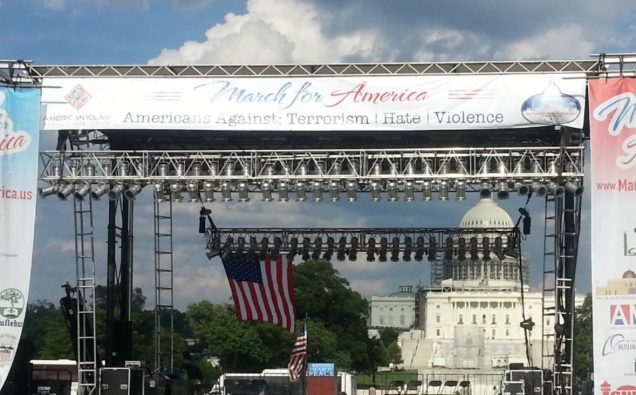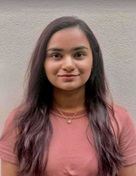
This past Spring Semester at American University’s School of International Service, the course Researching Islam allowed students to explore the origins of the Islamic faith and develop their understanding through the contemporary lens of Muslims in America.
After 9/11, Muslim-Americans faced a new reality in which their identity constantly prompted fear and suspicion. Muslims should unite against Islamophobia and support one another, yet the large population of over 3 million Muslims in the United States is divided amongst racial, ethnic, and sectoral divides, hindering relations with the non-Muslim population. Our professor, Ambassador Akbar Ahmed, who holds the school’s Ibn Khaldun Chair of Islamic Studies, encouraged us to interact with Muslim and non-Muslim communities through ethnographic and interpretive research methods to better understand the nuances of Muslim-American communities and their relation to the country’s non-Muslim society.
One major Muslim community that is often generalized as a whole, despite their vast range of identities is the Muslim-American immigrant community. In Dr. Akbar Ahmed’s book, Journey into America: The Challenge of Islam, he explores these identities through three main sectoral categories: literalists, mystics, and modernists. Tensions extend past these three broad categories to historical ethnic clashes as well, specifically between Arabs and South Asians.
Muslim-American immigrants come from a wide range of countries and cultures with varying levels of religiosity. After immigrating to the United States, some of these immigrants opt to hold onto the traditions of their country of origin by maintaining strong ethnic and religious connections while others attempt to replace or reinvent their traditions with the new American culture and environment in mind. The children of Muslim immigrants in particular face a unique challenge in their identities. Do they hold onto the cultural and religious practices of their parents and ancestors, or do they opt for the American values that they are surrounded by?
As the American-born child of Muslim and Bangladeshi immigrants, I experienced a shift in my religious and ethnic identity throughout my life. Although Bengali is technically my native and first language, the demand to speak English fluently in school scared my parents into limiting their use of Bengali with me, ultimately limiting my Bengali communication skills. As a child, I took pride in wearing traditional Desi attire and adorning my hands with henna for Eid. But the pressures to assimilate into American culture hit me soon as kids referred to my intricate henna designs as “ketchup” or “burn marks,” my colorful Desi clothes would warrant sneers and laughs from my peers, while the hijab incited fear and distaste in students and teachers alike. I quickly learned that to avoid negative attention was to become invisible and to become invisible I needed to be as non-Muslim and non-Bengali as I could be. As an adult, through active efforts, I’m more in tune with my ethnic background than my younger self but my “American identity” is much stronger than my siblings and parents who did not face the same linguistic and socio-cultural backlash that I faced growing up.
My experiences prompted me to utilize this ethnographic research opportunity to explore how religious and ethnic identity shift generationally amongst Muslim immigrants in the United States. I predicted that younger generations, specifically the children of Muslim immigrants would identify less with their religious and ethnic backgrounds because of the pressures to assimilate into American society and extended use of English in comparison to other languages.
A guiding principle in my research is Hansen’s Law. Developed by Marcus Lee Hansen in 1938, the law describes a three-generational pattern in which foreign-born first-generation immigrants hold onto their culture and traditions while their second-generation children adopt more American values. Hansen claims that the third generation, grandchildren of the first-generation, tend to look back and reconnect with their ethnic/religious roots – more so than their second-generation parents. This theory is limited and conditional for multiple reasons. Generations in themselves are hard to generalize not only because of the blurred lines between each generation but also due to the differences in access to resources or environments which greatly distinguish individual experiences across generations. In addition, religiosity and ties to one’s ethnic background are hard to measure. However, Hansen’s Law is still useful as a baseline to understanding the nuances amongst the Muslim-immigrant identity in the United States.
The seven respondents in my research ranged from college-aged Muslim immigrants and the children of Muslim immigrants to Muslim immigrants who have lived in the United States for nearly sixty years. Their ethnic backgrounds varied between South Asia, the Middle East, and North Africa, all from predominantly Muslim countries. The interviewees and their families moved to the United States seeking economic and educational opportunities. I asked each participant a variety of questions focusing on their levels of engagement with religious and ethnic communities, personal identification with each community, languages used, pressures to assimilate, and differences in religious and ethnic identification between themselves and their parents or children.
Although the responses to each question varied greatly between each respondent, there were a few common threads. Younger participants and the children of older participants identified more as “American” than their older counterparts due to either citizenship status or growing up in the US. They also leaned toward liberal views and expressed rethinking of their religiosity after increased time in the US. One interviewee, a young Arab American, described how older immigrants tend to see the US as “a graveyard for religion”. Other interviewees would agree, noting how older generations tend to hold onto their roots whether that be through increased religiosity or ethnic practices. On the other hand, younger immigrants or children of immigrants are more open to different perspectives and more likely to accept American cultural norms. All the young interviewees expressed shifts in their religiosity because of their interactions and experiences in the US as opposed to the full immersion in cultural and religious practices experienced in their home countries. They believed in a more personal and spiritual practice of Islam that doesn’t necessarily require active engagement with a Muslim community.
Older participants, on the other hand, were more likely to regularly engage with a Muslim and/or ethnic community. For some interviewees, ethnic and religious communities overlapped while others viewed their Muslim and ethnic connections as two distinct communities. Overall, all participants engaged with people from a variety of backgrounds daily although some participants expressed preferring closer relations with those of shared backgrounds because of mutual understanding and connections. The diversity in interactions may be a result of our interviewee demographics, and not representative of all Muslim immigrants because most of our interviewees were well educated, fluent in English, and work in academic fields.
Unlike my prediction, learning and speaking the English language did not have a large impact on most participants because they used English from a young age and did not feel disconnected from their other spoken languages or culture. However, the two young South Asian women did express a disconnect from their ethnic communities due to communication issues. Unlike the other participants, their ethnic language abilities seemed to decrease with increased use of English. This divide between the participants may be a result of the other participants spending more time in their home countries than these two.
Each respondent brought a unique perspective to our conversation in regard to religiosity and ethnic connections, highlighting the diversity in the Muslim-American immigrant identity. There are clear divides between older and younger generations however individual connections to ethnicity and religiosity seem to vary from person to person. Ultimately, everyone felt connected to their cultural and religious roots to some extent and expressed respect for people of all backgrounds. Despite the internal divides, the attitudes displayed by our interviewees provide an opportunity to facilitate positive relations within Muslim communities and hopefully unite Muslim-Americans as a whole.














